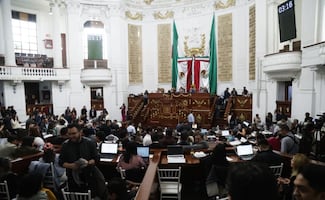Más Información

Congreso capitalino aprueba reformas contra violencia de género y familiar; endurecen penas y algunos delitos se perseguirán de oficio

Sheinbaum promete más seguridad en Chihuahua, Sinaloa y Durango; restituye 3 mil hectáreas de tierra a pueblos indígenas

Previo a marcha de la Generación Z, Fox pide a la ciudadanía que se involucre; "México no está cansado, está despierto", dice

Exgobernador César Duarte comparece en el Altiplano; jueza decidirá vinculación a proceso por lavado de dinero
Mexican experts have discovered that the main pyramid at Mexico's Mayan ruins of Chichén Itzá was at least partially built atop a subterranean river.
Experts from Mexico's National Autonomous University say they found a subterranean cavity about 20 meters deep below the pyramid of Kukulkán, also known as El Castillo.
Geophysics expert René Chávez said Thursday the underground river chamber is naturally covered by rock.
Such underground rivers often connect the open "cenotes," or sinkhole lakes, that dot Mexico's Yucatán peninsula.
The discovery was made using a kind electrical resistance survey, not by excavating.
Archaeologist Guillermo de Anda said the discovery was important. He said it may confirm that the Mayas included symbolic maps of their cosmology in their temples and sacred sites.
Noticias según tus intereses
[Publicidad]
[Publicidad]








